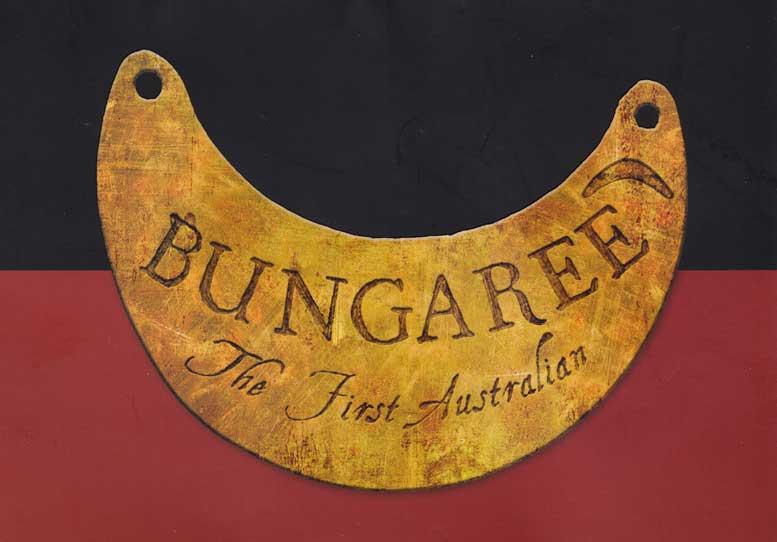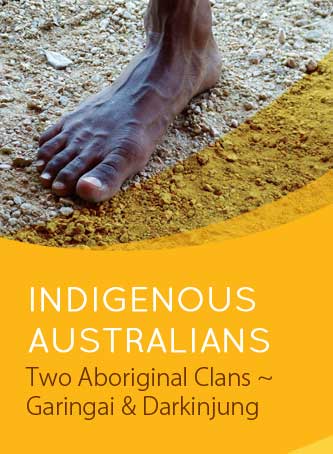Original People, Traditional Lands
Two Aboriginal Clans
The traditional lands of the Guringai people and the Darkinjung people extend through and around the area known today as Calga.
Guringai People
The culture of the Guringai people is very much alive today. The traditional Lands of the Guringai/Wanangine extend from Lane Cove in the south, to Lake Macquarie in the north.
The Guringai nation today is represented by the Guringai Tribal Link Aboriginal Corporation, established in 2003. The purpose of Guringai Tribal Link is to reunite the traditional clans of the Guringai people and to teach contemporary Guringai culture.
Bungaree was the Guringai’s last traditional old man. Bungaree was also the first indigenous Australian to sail around the Australian continent, first with Mathew Flinders and then with Philip Parker King.
Tracey Howie, who has been running Guringai Tribal Link since 2004, is a direct descendant of Bungaree.
The Guringai Tribal Link website contains information about the history and living culture of the Guringai people, and the work that Guringai Tribal Link is doing for people today and for future generations.
Darkinjung People
The Darkinjung people were an inland group whose territory extended from the Hawkesbury River in the south, northwards about 60km to Wollombi and the Hunter River.
Darkinjung Food
Despite being inland people, the Darkinjung ate a lot of seafood. Archaeological excavations of ancient Darkinjung midden sites show that snapper, bream, leather jacket, rock cod and groper were all popular. In summer when these fish were plentiful, the Darkinjung people would travel down to the Hawkesbury River and to the sea where women used lines and men used spears to catch the fish. In winter, the Darkinjung people relied more on the land for food. Food animals included potoroo, emu, kangaroo, quoll, echidna, flying fox, wallaby and wallaroo. Wombats and koalas were not eaten much, if at all. Plants and berries were also an important part of their diet, including burrawang palm seeds, yams and the roots of some ferns.
Darkinjung Weapons and Tools
The Darkinjung people used spears, spear throwers (woomera), clubs (waddy), wooden shields, boomerangs, stone hatchets and fishing spears (mootims. Women carried items in woven bags and wooden vessels (coolamon). The string or net bags were made from a knotted and braided fibrous cord from tree bark and grasses and could be used for carrying food and fishing gear. These bags were often slung from the forehead and hung down the back. Canoes were made from a sheet of bark, skewered at each end and plugged with xanthoroea gum.
Darkinjung Dwellings
Darkinjung dwellings would be clustered together, usually in groups of eight or nine. These were temporary shelters. One way to construct them was from flattened sheets of bark or gathered branches and foliage, supported on timber frames bound by fibrous rope made from tree bark. The Darkinjung also used rock shelters, usually facing north-east. In this part of the world, north-east facing dwellings would best capture warmth and light from the sun, and offer protection from prevailing winds.
Darkinjung Dress
Traditional clothing was frequently made from possum skin and hair. Traditional garments were frequently made from possum. These included a body cloth made from a long cord of possum hair wound many times around the waist from which three or four strips of possum skin hung down to around mid thigh, possum fur blankets, and possum skin cloaks.
Aboriginal Artifact Sites
Art plays a very important role in passing on teaching stories in tribal Lore. The role of art is not explaiend by the western concept of art for aesthetic pleasure. Aborignial art was and is central to making sense of the world and teaching responsibilities. The Hawkesbury engraving sites, including those found at Walkabout Park, are among the richest and most varied in the world. The extensive sandstone platforms in the area provided ideal surfaces for rock engravings (the archaeologists call these “petroglyphs”). There are more than 4,000 engravings, stencils and paintings recorded in this area. It is ignorant to see these only as archaeological evidence of ancient civilisations. Aboriginal culture is just as relevant to contemporary society as it has always been, and these sites are teaching and holy places for Aboriginal people today.
Neighbouring Clans
Territory and Trade
Relationships between communities was normal and complex with people marrying into other communities. Trade was also common and necessary e.g. communities with traditional lands along the coast might exchange resources with inland people, such as tools made from coastal plants for clothing made from inland animal fur. There were rules for how people would approach and move through other people’s Place, but this movement was structured and respectful. Rules for interaction were handed down e.g. in Songlines prescribing how and when and why people should interract, and what protocols they must observe when reaching another people’s Place.
Guringai and Darkinjung People
The Darkinjung and Guringai people’s traditional lands were interleaved and they came together to access resources. This facilitated a close, cooperative relationship between the two clans and reciprocal sharing of land and resources e.g. the Guringai people would move inland to hunt kangaroos and emus during winter, and the Darkinjung people would move down to the coast to harvest seafood in summer.
Thurrawal People
The Thurrawal and Guringai people’s traditional lands met on the Sydney peninsula.
Dharug People
The Dharug people’s country extended from south of the Hawkesbury River, inland to the Blue Mountains. The Hawkesbury was a clear territorial boundary so it is generally accepted that Dharug (south of the river) and Darkinjung (north of the rover) Country did not overlap. However, the Dharug people would have had close contact with the Guringai people at the southern extent of the Guringai people’s traditional lands.
Awabakul People
The Awabakul people’s traditional lands connected with the Guringai and Darkinjung traditional lands in the Newcastle area around Lake Macquarie.

Indigenous Australians
Indigenous Australians have lived on the Australian continent and surrounding islands for thousands of years. There is evidence that they have lived here for at least 40,000 years since around 50,000 BC. It is possible they may have been here for 70,000 years or more.
People whose ancestors come from the Torres Strait Islands between Australia and New Guinnea are usually referred to as Torres Strait Islanders. Aboriginal people are the original Australians from mainland Australia, Tasmania, and the other islands.
Aboriginal people lived right across this vast challenging continent, and their traditions and cultures are relevant to where they live, or their Place. There were more people living in the south east of Australia along the coast and the Murray River, much like today where more people live where there are more resources. However, the original Australians also lived successfully in areas that are today considered to be too inhospitable or remote for human occupation.
Of the more than 260 distinct languages that were spoken by Aboriginal Australians, around 200 are still in use. However, except for around 20, these languages are all in danger of being lost.
Each community has a unique culture as well as language. It is not surprising to note that all communities share the same central tennets of Lore that determine how people should live on Country in harmony with each other, the animals, the environment and the ancestors. The central Lore, or laws and beliefs, that determine what being a good person is are mostly universal for all people, wherever they live in the world. Sadly, today, the world’s peoples do not follow these tennets and have lost the ability to live sustainably.
At the start of the 21st Century, around 2.5% of Australia’s population identify as Indigenous Australians.We would all do well to learn from Indigenous cultures how we should protect our precious Country.


